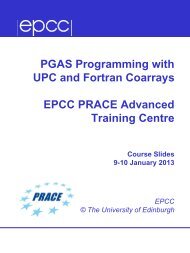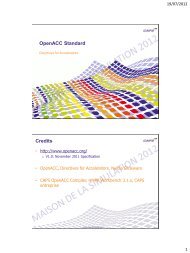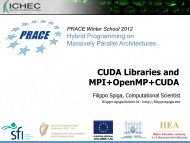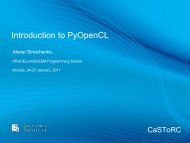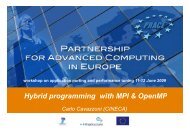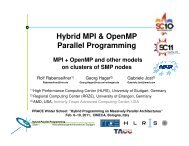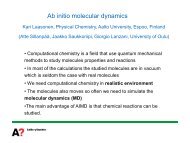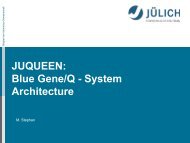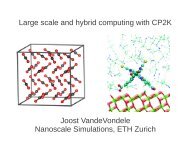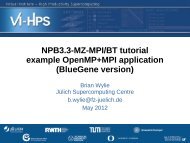Molecular Simulation Methods with Gromacs
Molecular Simulation Methods with Gromacs
Molecular Simulation Methods with Gromacs
Create successful ePaper yourself
Turn your PDF publications into a flip-book with our unique Google optimized e-Paper software.
state. The free energy differences, however, are often of the order of tens of kJ/mol: forexample, the free energy of solvation of ethanol at 298K is -20.1 kJ/mol, which isequivalent to -8.1 k B T: a relative probability of 3·10 -4 . One would need to wait a longtime for that transition to occur spontaneously, and even longer to get good statistics onit.Because of this probability issue, free energy methods rely on one basic idea: to forcethe system to where it doesn’t want to be, and then measure by how much it doesn’twant to be there. In free energy perturbation methods, we force the system by couplingthe interaction strength between a molecule of interest and the rest of the system to avariable !:E total = E ligand ligand + E rest rest + E ligand restand we slowly turn ! from 1 to 0. This means we can effectively turn off a molecule, andpretend that it is in vacuum (at !=0): we force the system to where it doesn’t want to be(either in the solvated or in the vacuum state, depending on what the sign of the freeenergy difference is). We’ll then use the BAR method of calculating by how much itdoesn’t want to be there.Coupling and de-coupling in this way helps us <strong>with</strong> calculating the free energy ofbinding, because we can now create a two-step path:2



